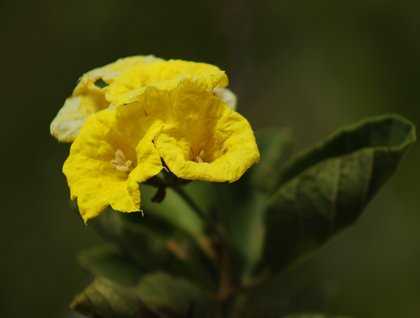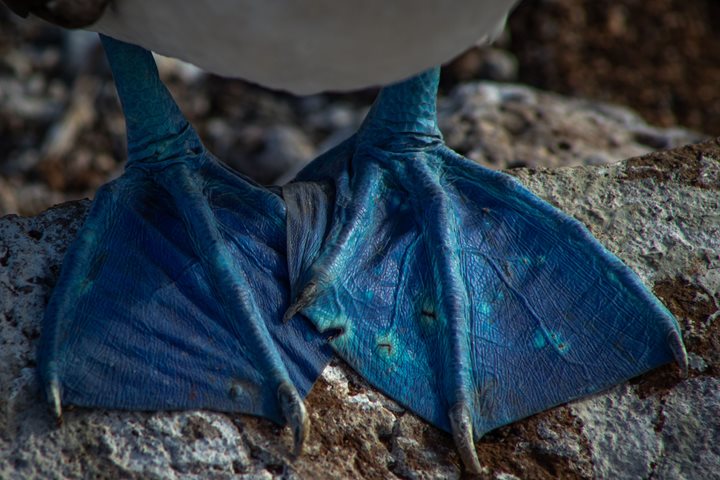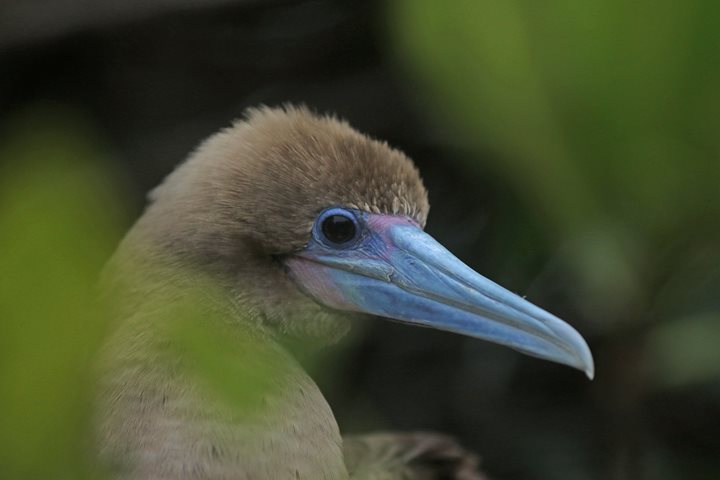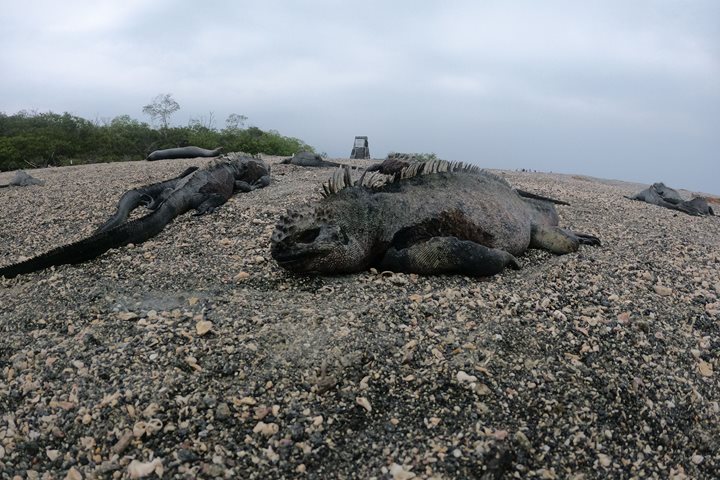We anchored off the coast of a visitor site named after a past Ecuadorian president. We disembarked with a wet landing on Urbina Bay. Once on land, we began our exploration where the land iguanas had colonized. As we walked along the coastline, many interesting uplifted features showed up: barnacle shells on the rocks, coral pieces, sea turtle bones, etc. This area was uplifted in 1954, and everything that was under the ocean rose above sea level. We encountered a giant coral head above water, and it was just incredible to think that the place that held a huge marine ecosystem once is now the habitat for the yellow dragons of the Galapagos. Soon we entered the path area covered with bush on both sides, looking for reptiles everywhere. Some of us were able to spot three Galapagos giant tortoises under the poison apple trees, shading and escaping from the heat. Of course, several land iguanas were spotted, most of them shading and feeding on the green succulent vegetation.
In the afternoon, we navigated towards Tagus Cove, where the giant cliffs of this site trapped history in time, holding graffiti from many early visitors like the Dove (first sailboat to go around the world just by sail) and the Lucette (a ship attacked by a whale around the western Galapagos). We had several options for our guests. While some kayaked, others went Zodiac riding. An interesting hike to the top of Darwin Volcano was offered to explore the interesting geology of this island and enjoy the great view of the lake inside the crater of this small volcano. We could even see the National Geographic Islander anchored at Tagus Cove.
We went back to our mother vessel and continued our expedition with a clear stargazing session at night.







